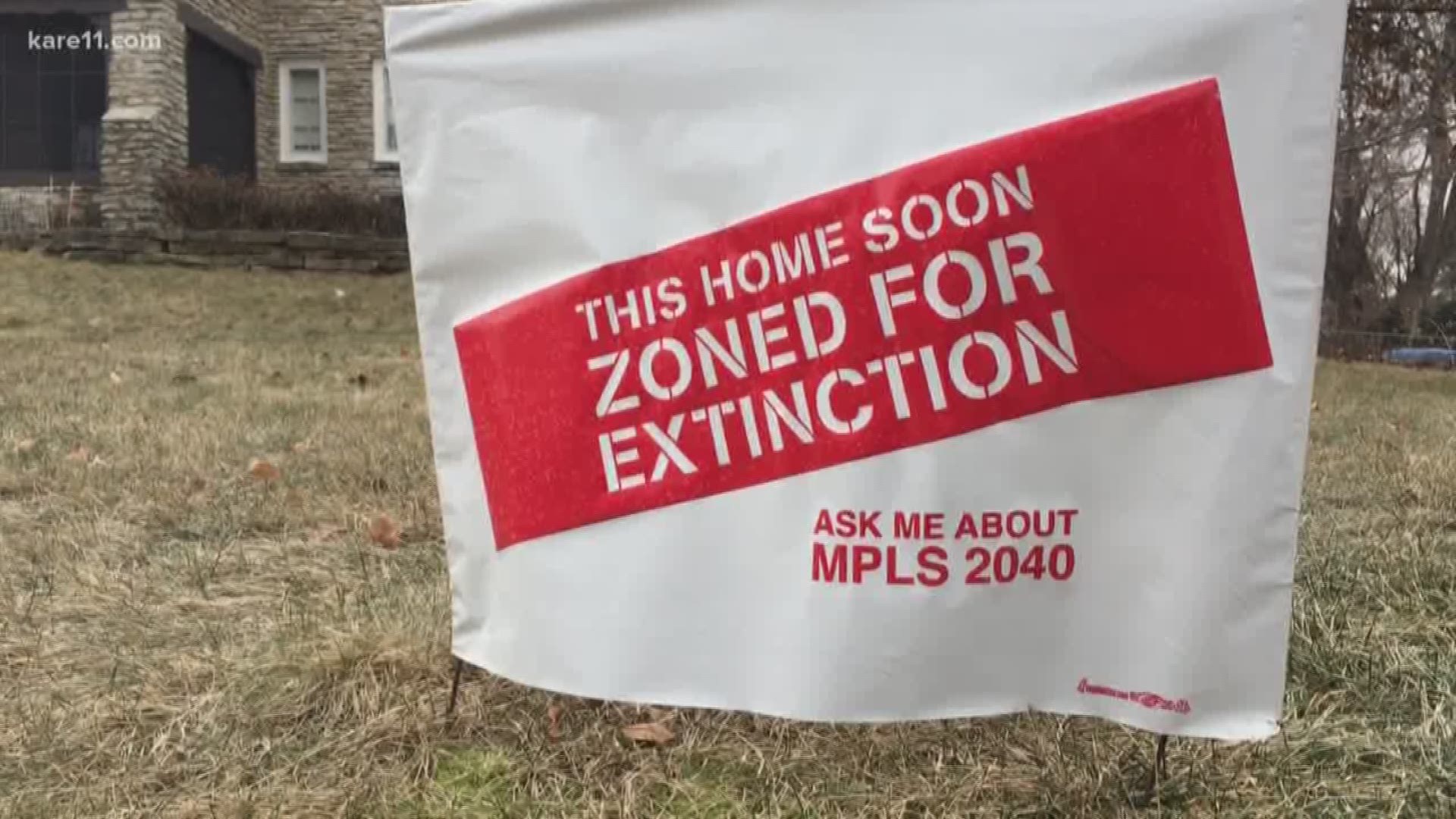MINNEAPOLIS -- Leaders here in Minnesota's largest city are putting the finishing touches on their vision for how the town should look in 22 years, but that master plan has spurred debate over housing density.
The Minneapolis City Council Wednesday wrapped up work on amendments to the comprehensive plan, known as Minneapolis 2040. The final vote will be December 7, but the most controversial issues have been settled.
A key feature of Minneapolis 2040 would allow triplexes on traditional single-family city lots, either through new construction or by converting older homes into three units. The goal is to increase the supply of affordable housing.
"Our city's population is growing, so we know we'll need more housing for people," City Council President Lisa Bender told KARE.
"We have one of the lowest rental vacancy rates in the country. It's because housing is so tight."
But some fear the end of single-family zoning will threaten the character of the city's vintage neighborhoods with well-preserved housing stock, front yards and tree-lined streets.
Council Member Linea Palmisano, who represents the 13th Ward in southwest Minneapolis, says she's worried corporations based outside the city will buy up single-family homes that are being rented and replace them with triplexes to maximize the rent revenue.
"I've heard from many constituents in the past few months and there are a lot of fears about absentee landlords, and a lot of fears of buy-up," Palmisano explained.
She said the requirement of two entrances per unit for triplexes, let alone off-street parking, would make it very difficult to build triplexes on standard city lots that are 40 feet wide.
Palmisano proposed, as an alternative, a requirement that at least one of the units in new triplexes be homesteaded. In other words, one of the units would be an owner.
"A homestead requirement to me helps keep it at local wealth-building, local home ownership, and that is the way we’ve built wealth in our city, particularly with lower income communities over time."
Palmisano couldn't gain enough support for that idea, so she proposed limiting the density of those single lots to duplexes. That attempt to amend the plan failed.
Council President Bender said duplexes are already allowed on most city lots, especially since accessory dwelling units, known as "granny flats" were legalized in the city. Bender said only about 100 homeowners have applied to add those extra units.
Bender said residents shouldn't worry about their single-family neighborhoods losing their character. She asserted parts of Ward 10, which she represents, have high levels of converted rental property and yet look and feel very much like single-family areas where most homes are owner occupied.
"This is really a very moderate way that over time, incrementally, people can add a little more housing here and there through neighborhoods in the city."
State law requires cities to create long-range land use plans and send them to Metropolitan Council for review. Subsequent zoning decisions are expected to conform to the master plan.

